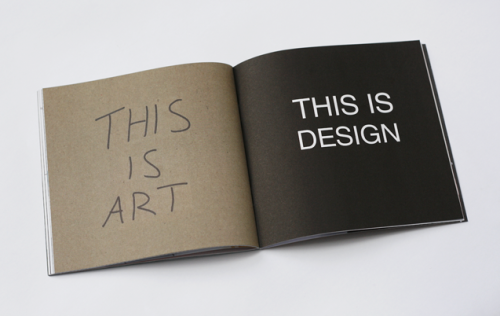No Matchy-Matchy Art

Art and design. Ever since architect Gordon Bunshaft told David Rockefeller to “Put some art on the walls” to warm up1 Chase Manhattan Plaza, art and design have gone together like milk and cookies. Like the best relationships, art and design should complement one another. By complement we don’t mean compete with and we sure don’t mean blend into one another either. When you match the art to all the colors in the design elements (carpet, vinyl wall covering, upholstery, etc.), you’ve demoted art to mere décor and you’ve relegated your space to being flat, one-note and one-liner. But art has waaay too much potential, too much to offer to be pigeon holed like that. On an aesthetic level, we totally understand to impulse to match art and design. It’s only human to want things to “go” together. But art has this awesome thing about it that pretty much negates the need to “match.” The more art can be its own element in a space, the more complexity and depth is achieved. Designers are whizzes at creating environments, but artwork is about creating an experience. That experience should be nuanced and engaging and continually ask the viewer to reassess as he moves through the space. The individual artworks should stand on their own but when placed together, they should create something that’s exponentially larger than the sum of its parts. Arts professionals (art consultants, curators, gallerists, artists) are trained, often for years, to understand art’s power, to leverage it, harness it for a project to make that space outstanding not just ho-hum. We always value when clients and designers share artists with us, but we see more than just color or form or style, things clients and designers can sometimes get caught up on, when looking at an artwork. We see the quality of the artist’s craftsmanship, the execution of the artist’s idea, where this work fits into both the context of art history and the current arts landscape, how this artwork will translate into the space and the message it will deliver to employees, clients and the community at large.
People buy art to make a statement. That statement will inevitably vary based on the person, but we’re 99.99% positive no one wants to make the statement: “[Insert color/style] everything.” When you use the same color palette/style in the art as the design, everything starts to blend together, which means your brain turns off and says, “I get it, this space is a whole lotta [insert color/style]. I can ignore everything from here on out.” It’s our experience that clients and designers spend a TON of time, money and energy developing spaces, so why would any of them want people to ignore all that hard work? Art that complements yet stands on its own from the design will not only call attention to itself but also the full environment (i.e. the design!) and get you closer to that elusive art and design nirvana.
So how do you not fall into the matchy-matchy sink hole but still maintain art and design cohesion? To start, you need to understand your values and what your goals are with the design. Do you want to refresh your image, attract new talent, engage the community, humanize an institutional space, create an unforgettable client/customer experience? If you’ve approached your design and your art collection with these same over-arching goals, they will inevitably go together because you’re using the same selection criteria, the same vision to develop each one. Next, get your designer and art consultant talking. At NINE dot ARTS, we love designers. We love floor plans. We love renderings. We love swatches and samples and mood boards. Pretty much anything and everything that visually expresses the design direction. When we see design plans early on, we’re able to integrate the art into the design with art niches, art lighting and blocking, which means we’re able to create a seamless and gorgeous experience for the viewer. Next, let the consultant do what he does best: find the perfect artwork for the project.
Ultimately, letting the art stand on its own is about elevating the design not trumping it. Art serves as a tool to add complexity and intrigue to a space and provides the viewer with an opportunity to see the world with a renewed perspective and even a new interpretation on life.
Image by Maria Hole via Zach Kenzie